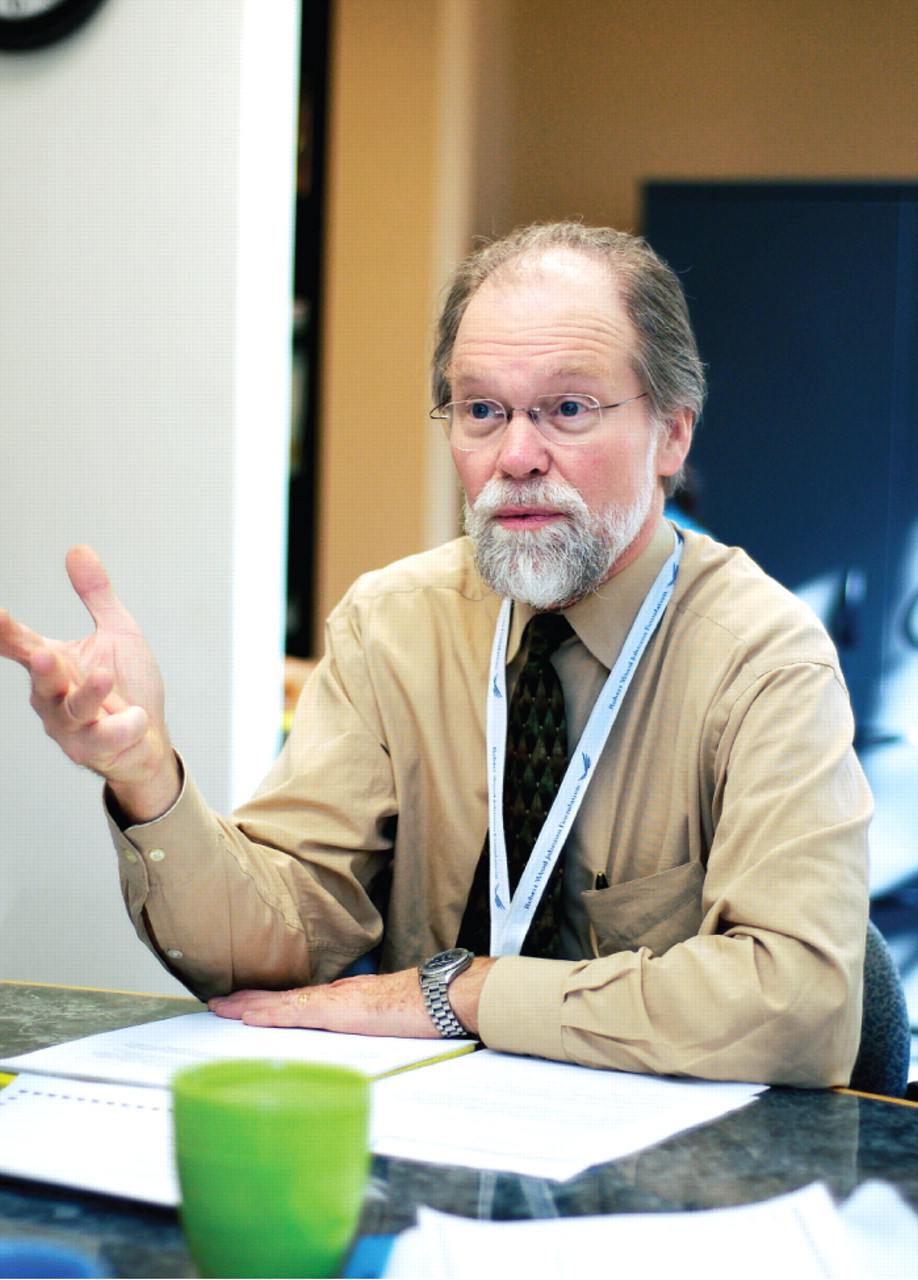Isolating himself in his dorm room at the nearby college he attended in Portland, Maine, periodically smoking pot to ease his anxiety and possessed at times of vague, non-specific ideas of reference—“Max” (not his real name) was not precisely what anyone would automatically term“ psychotic.”
But anyone, including Max himself, could tell that something wasn't right.
“He was making some connections that weren't really rational,” recalled Sarah Lynch, a clinical social worker at the Portland Identification and Early Referral (PIER) Clinic. “He would put two things together that were unrelated and think that he was getting messages from somewhere.
“He had a little bit of grandiosity—notions that he might be destined to do something monumental,” she said. “His symptoms ebbed and flowed, and he was confused and knew [his thoughts] were weird. For instance, he was suspicious of others and had the feeling people were staring at him but had insight that this fear was probably unfounded. But the only person he was talking to was his girlfriend. She'd tell me, 'He says things to me that really scare me.' ”
Today, Max is a patient at PIER receiving psychotherapy and small-dose antipsychotic medication, and participating with his family in multifamily group meetings with other patients like him—those believed to be in the prodromal, or prepsychotic, stage of schizophrenia.
In another day, Max might have already had an acute psychotic break and be destined for a life of chronic hospitalization and debilitating illness. But the PIER program, led by psychiatrist William McFarlane, M.D. (winner of the 2007 Alexander Gralnick, M.D., Award for Research in Schizophrenia, awarded by the American Psychiatric Foundation), is serving as a national model for a pioneering effort in the early identification and prevention of schizophrenia.
The Robert Wood Johnson Foundation has awarded $14.8 million to five sites around the country to replicate the PIER program's approach as part of the Early Detection and Intervention for the Prevention of Psychosis Program (EDIPPP). PIER also serves as the foundation's National Program Office for EDIPPP.
McFarlane told Psychiatric News that preliminary data indicate that the rate of acute schizophrenia per population has dropped within the PIER catchment area compared with the rest of Maine. Though those data remain to be confirmed, staff at PIER who are familiar with the long-term nature of schizophrenia express a genuine awe at the results they see at the clinic.
“I have worked in mental health at the other end of the spectrum with adults who have had schizophrenia and bipolar disorder for years,” said Nelma Mason, R.N., a nurse at the clinic. “And I have worked with so many people who are one hospitalization away from never leaving the hospital again. How could you not be excited about being part of a program that might prevent that?”
Thomas Insel, M.D., director of the National Institute on Mental Health, who has visited the PIER clinic, said it represents a new direction in the treatment of schizophrenia.
“We have largely defined schizophrenia as psychotic illness, meaning when someone has a psychotic break,” he told Psychiatric News in an interview. “That's a bit like defining coronary artery disease by having a heart attack. It's a late stage in the disease.
“What we have been thinking about is how to get people much earlier in the disease,” Insel said. “If you think about schizophrenia in stages, stage 1 is early development and genetic risk; stage 2 is when people begin to develop very early, subtle symptoms such as social withdrawal and cognitive problems.
“Stage 3 is a psychotic break, and stage 4 is when a person becomes chronically ill and disabled. Most of what we do in 2008 is focused on stage 4. And it is no wonder we have not much to show for it.
“At PIER they are really going after stage 2 and identifying people who may be at genetic risk and exhibiting very early behavioral symptoms,” Insel told Psychiatric News. “So they are going down this very interesting path to see if we can have a bigger impact on the disease by identifying and treating people much earlier.”
Max was identified for participation in the PIER program by the resident assistant (RA) at his college dorm—the fruit of an outreach effort to educate the public, as well as high school guidance counselors and college and university RAs, teachers, and primary care physicians about the prodromal signs of schizophrenia.
“This is a public health initiative,” McFarlane told Psychiatric News. “Our intent in Portland has been to train the entire relevant community to identify every at-risk case. That's hard to achieve for any disease, and we didn't know if that piece of the model was going to work.”
Yet despite the sometimes ambiguous nature of prodromal symptoms—when are someone's odd thoughts and beliefs prepsychotic, and when are they within a normal range of idiosyncrasy?—McFarlane says that many of those who have been trained in the community have become adept at spotting at-risk youth, and it is rare to get a referral of someone who is not seriously in need of attention.
Since the clinic opened in May 2001, PIER has assessed approximately 260 individuals for preclinical psychosis in a catchment area of 330,000.
A total of 149 have met prodromal criteria and entered the research project, and 120 of these have continued in treatment for at least three months. McFarlane said many of those who are referred but are not eligible for the program are already psychotic and get referred to outpatient treatment much earlier than they typically would have.
The effort highlights what is novel and daring about the effort at PIER—an effort to reach into the community to find psychosis that is waiting to happen but that would normally go unnoticed until catastrophe strikes.
“Schizophrenia is a continuous process, and one part of the process just shades continuously into the next,” McFarlane said. “That's one of the challenges in training professionals who are not in the mental health business. How would you differentiate someone who is fully psychotic from someone who is prodromal?”
Many of the patients like Max are treated with small doses of antipsychotic medication. McFarlane believes that given the serious and debilitating nature of schizophrenia, as well as the documented reliability of prodromal criteria, concern about medicating preclinical adolescents is misplaced.
“We use it very conservatively,” he said. “We thought once we wouldn't have to use meds and could just rely on psychosocial treatments. But we quickly learned that while that's a nice idea, it just doesn't work.”
McFarlane said the rate of conversion to psychosis has remained consistently around 7 percent or 7.5 percent since PIER opened its doors. Almost all of the referred patients who converted to psychosis are ones who refused antipsychotic medication, he said.
“We are doing great relative to the predictors employed for cancer,” he said. “And look what we do to patients with high PSAs and positive biopsies—treat them with radioactive implants, surgery, or chemotherapy.”
While medication appears to be essential to prevention, antipsychotics alone are effective only in averting the acute onset of psychosis.
The real work of altering the family and environmental dynamics in an at-risk teenager's life takes place in multifamily meetings in which patients and family members work together, often coaching each other with “family guidelines” on how to promote recovery and prevent a recurrence, and to create a positive environment (see
Ways to Promote Recovery, Prevent Recurrence).
“I would say it's the backbone of what we do,” McFarlane said.“ Aside from the really dysfunctional family, which is remarkably rare, most of the families are working with us as part of the rehabilitation and treatment team.”
So patients and family members together strive for practical solutions to any number of problems and issues—compliance with medication, conflicts at school or with friends or family, managing school workloads efficiently—that arise in their daily lives.
In most cases social workers and clinicians are involved in working“ in-situ” with the adolescent to solve specific problems that he or she experiences in the community. In the case of Max, for instance, his anxiety about his school work required staff to approach the college about having professors and instructors check in with him periodically to give feedback and reassurance about his work.
These strategies have been shown to be at least as powerful as medication in doubling rates of recovery and preventing recurrence of symptoms, McFarlane said.
He told Psychiatric News that rough, preliminary data indicate that the average Global Assessment of Functioning Scale score of patients treated in the program increases from about 35 at entry to about 50 or 55 at 12 months. He said he is hopeful that 24-month data, not yet available, will show even greater improvement, reflecting the action of psychosocial treatments, which can take longer to take effect.
At APA's 2007 Institute on Psychiatric Services in new Orleans, where he delivered the Alexander Gralnick award lecture, McFarlane said that a decade's worth of research on microcomponents of environmental stress has shown that family and environmental stressors encompassing very subtle interactions common to many families can work in tandem with biological determinants to produce psychosis.
“These young people may deteriorate very slowly in function, which can make family members anxious, angry, or depressed,” McFarlane said then. “And in many of the families [with] a history of schizophrenia or psychotic disorders, the anxiety level can begin to rise to astronomical levels. It can be extremely frightening if they have some idea of what this might mean” (Psychiatric News, December 7, 2007).
Today, staff at PIER say that Max looks nothing like the adolescent who first came to the clinic. Success at school and at a job have diminished his anxiety and given him confidence, and antidepressant medication has lifted his depression.
“He hasn't had psychotic symptoms for some time now, and though he still struggles with the party culture at college, he's much more comfortable with himself and his choices,” said Sarah Lynch, who has worked with him. “He is so much more outgoing; he just looks like a different kid.” ▪


